Poet above all and author of fantasy and detective novels, Michel Bernanos was born on January 20, 1923 in FRESSIN (Pas-de-Calais). Fascinated by Brazil, where his family had decided to live in an adventurous way, he will make a great number of his novelistic characters evolve there.
From his eighth year onwards, Michel traveled a lot, as his parents, the writer Georges Bernanos and his wife Jeanne née Talbert d’Arc, moved house to house, thus preventing him from attending school regularly.
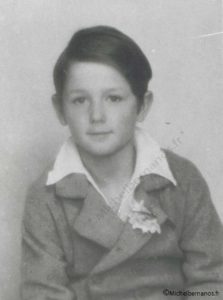
Summer 1931, during a visit in Les ALLEUX at the home of family friends (near Avallon), Marie Brusset, who was eighteen years old at the time, taught this little boy to read :
It was 1931. I will always see this delicious blond boy – a tiny freckle on the tip of his nose – all saturated with sun […]. His suitcase was, if not full of sand and salty air, filled with little shirts and multicolored shorts, unusual in our severe, wild and traditional Morvan. This is what happened to Michel. He was eight years old – I was eighteen – lively, joyful, affectionate, dreamy, endearing. And that laugh! The Bernanos laugh, bursting and irresistible.1
After living for a time near Hyères at la BAYORRE,2, the Bernanos family left France for Spain, settling in Málaga at the end of 1934. At the age of 11, Michel attended a boarding school in the south of France for a few months, and was reunited with his family at vacation time. Civil war broke out in July 1936. The streets of PALMA DE MALLORCA became too dangerous for the youngest siblings. So, after supporting the civilian population at the risk of their lives, Georges, Jeanne Bernanos and their son Yves decided to return to France with the rest of the family on March 27, 1937.
In 1938, Michel was 15 years old. They set sail from MARSEILLE for PARAGUAY (South America), where his father wanted to set up a farm with his wife and their six children. After a stopover in DAKAR, then RIO, and finally BUENOS AIRES, where they stayed for a week before reaching ASUNCION in Paraguay, they returned to BRAZIL a few days later.3 BRAZIL became the land of Michel’s heart, and he would miss it greatly on his final return to France. It was then that he began to write his first poems, and he never stopped writing.
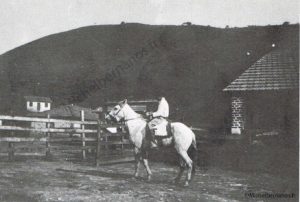
The Bernanos family settled successively in RIO DE JANEIRO, in ITAIPAVA and JUIZ DE FORA. From 1939 to July 1945, the holding of three fazendas followed one another (VASSOURAS, then PIRAPORA and finally BARBACENA in the state of MINAS GERAIS). The family raises horses, zebus and also tries the culture.4
When the young Michel came back from the big city, schooled at the time in the French high school of RIO DE JANEIRO, he led there, in these great spaces, between sky and earth, a life of rider specialized in the breaking-in of foals, learning to ride like the gauchos without saddle nor spurs. The half-bloods from the beards were bred for the army, the young ones being reserved for the cowherds. Thus, in a ten-hour day, our rider could ride one hundred and fifty kilometers on animals that were ridden only every three days to avoid exhausting them completely. These mounts were only used for three months a year, which required twenty horses per shepherd in a year, and in a country where mares are never ridden.5
September 1942, in the middle of World War II, Michel was 19 years old. The civil majority being fixed at the age of 21 years for the time, he presents himself to the Committee of Free France in order to engage voluntarily in the Free French Naval Forces and manages to pass the controls until Argentina in spite of his young age.6 –7 –8
His sister Claude describes the context of his involvement as follows :
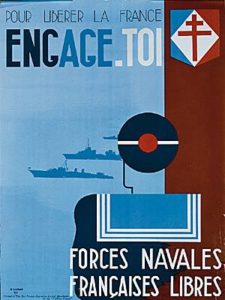
[…] A month later he left without saying anything to anyone. I was inconsolable and alone. I received a letter from him, from Argentina. He was arrested because he was too young. He wanted to join the Resistance in England, but he could only continue his journey with his father’s permission. And Dad gave it. I did not see him again until we returned to France. […]9
After arriving in London and completing the first few months of training, Michel was assigned as a gunnery sailor on Chasseur 12 until December 1944.10
The Chasseur 12, mainly based in the Channel and the North Sea, was tasked with spotting enemy submarines, mine laying missions, rescuing ships in difficulty on the high seas and protecting convoys along the Atlantic Wall. It also took part in the D-Day landing operations of June 6, 1944, during which it was called upon to rescue a barge in difficulty off the Isle of Wight in order to tow it to the Normandy coast, near Port-en-Bessin, and then in the Normandy naval battle, which only ended in mid-August 1944.
The Chasseur 12 and its crew received a citation in 1945, honouring the values of courage and energy shown by the crew during the missions assigned.
From December 1944, Michel was appointed bodyguard to Admiral Muselier before being assigned to the military mission of German affairs from the beginning of 1945 until his demobilization in March 1946.11 –12 –13
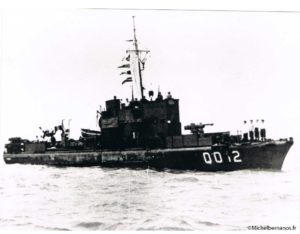
©Le chasseur Q12 – BENODET
In 1946, at the age of 23, Michel returned to BRAZIL. There he found a job in MANAUS (Amazonas State) in the exploitation of rubber trees mainly intended for rubber extraction.
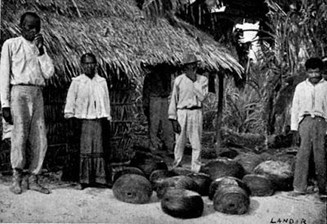
He was in charge of controlling the rubber bales brought in by the Indians in a given area, and his particularly comfortable salary acted as a risk bonus. Indeed, those who took the task too seriously were sometimes found dead in the early hours of the morning. The Idian community in the area was grossly underpaid for the work they did, and having suffered so much from the years of slavery over the past centuries, they would let nothing pass them by. Aware of the situation, Michel negotiated with his team an additional percentage on each bullet brought in untampered. In this way, he transformed his sector into the place where you find the least tampered with bullets in the Amazon.
He enjoyed a very good relationship with his teams, one of whose lives was saved during an expedition into the Amazon rainforest. This period of his life is easily recalled in Murmure des dieux (Michel Bernanos, L’insurgé, Salsa Bertin, Preface by Michel Estève, Editions de Paris, 241 p.).
In April 1948, he returned to France at the request of his father, who had fallen seriously ill. Georges Bernanos died on July 5.
From 1948 to 1950, he worked for two years in Algiers for an oil company.
Then, reluctantly, Michel settled permanently in PARIS.14.
Professionally, his main experience was in the navy, but in reality, very few sailors from the Free French Naval Forces decided to join the French Navy after liberation. He therefore worked in a variety of trades.
He worked with Robert Laffont on the launch of the dictionnaire des œuvres until the end of 1956. He then became executive assistant at the Société d’Édition Photographique et Technique (SEPT), which he left after its dissolution. At the same time, he was an actor in a short film by Jean-Louis Rabate and Pierre Jacquemin, La répétition, and an extra in Robert Bresson’s Un condamné à mort s’est échappé.
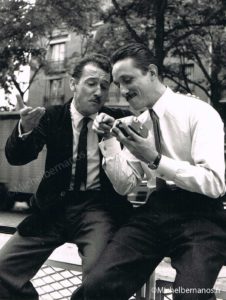
From 1959 to 1960, he was charged by the Office of Documentation by Film with contacting administrative and official circles in order to seek out services interested in the production and distribution of information films. Michel then worked in a travel agency from 1960 to 1963.15
On August 6, 1960, Jeanne Bernanos died. Deeply saddened by his mother’s death, Michel was writing the poem Solitude.
Wishing to distinguish himself from his father, all his writings published during his lifetime were under the pseudonyms DROWIN, then TALBERT. When asked why, Michel replies: “For example, if I see a book by Dostoievsky, I don’t have to remember that his first name is Fédor. I think of the nice guy who would pick up my book and find himself face to face with an anaconda instead of a country priest.”16
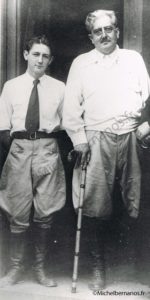
Like his father, Michel felt he loved writing; it was part of him and his life. It even became necessary to his survival; it was his outlet. But in the eyes of society, which saw him as “the son of”, recognition of his literary identity was undermined. Making a name for himself, his name, became more complicated.
Spontaneous and whole-hearted, he lived in a world of his own. However, in poor health on his return from the war, he gradually began to show two different sides to him: the one true to who he was, the cheerful, funny man with a good-natured spirit, but also, and conversely, the one of a terribly unhappy, even tortured, lonely man. A lonely man whose family and friends were ultimately powerless to help.17
It is in this context and in only four years that Michel writes all of his novels :
- Le Murmure des Dieux, his first novel, was written after the death of his mother. Completed at the end of 1960, it was dedicated to her;
- L’envers de l’éperon, begun in December 1960, was completed in May 1961;
- La grande Bauche, his first detective novel, was completed in the spring of 1962;
- Les nuits de Rochemaure, his second detective novel, was completed in the summer of 1962;
- On lui a fait mal, was completed in February 1963, but remained unpublished until 1996, its publisher deeming it too much of a black series for the collection for which it was intended;
- La montagne morte de la vie (The Other side of the Mountain), his second fantasy novel and considered one of the greatest masterpieces of fantasy literature, was written in just 19 days (May 1963);
- Le mort veille, a new detective novel, was completed in June 1963;
- La neige qui tue was written in July 1963. This crime novel was selected as one of the 10 best for the 1964 Quai des Orfèvres prize. The text had to be reworked by Michel, as the jury at the time considered it too committed to denouncing police corruption18.
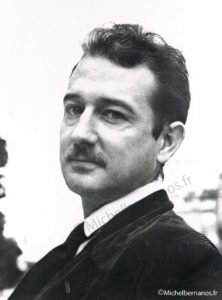
He also wrote various short stories, including They have destroyed his image (Ils ont déchiré son image) and The complicit forest (La forêt complice), the last short story to be published and which he had the opportunity to discover the day before his departure in the magazine Marie-Claire.19
On July 27th, 1964, Michel was only 41 years old, he left his home, a large empty travel bag under his arm. He was found in the forest of Fontainebleau. He ended his life.
Most of his works will be published posthumously by the work of his wife, Sylviane.
Notes et références
- La jeunesse de Michel, Marie Brusset, Les Cahiers Bleus n°46, Hiver 1988-1989 – 1er Trim. 1989, pp.11 à 13 [↩]
- Georges Bernanos, Jean-Loup Bernanos, Paris, Plon, 1988. Iconography, pp. 82-87 [↩]
- Georges Bernanos, Jean-Loup Bernanos, Paris, Plon, 1988. Iconography, pp.109 to 121 [↩]
- Georges Bernanos à la merci des passants, Jean-Loup Bernanos, Plon, 1986, pp.305 à 408 [↩]
- Testimony of sylviane bernanos, Points de repère, personal archives, Sylviane Bernanos, p.1 [↩]
- Services historiques de la Défense (SHD) – administrative files of resistance fighters http://www.servicehistorique.sga.defense.gouv.fr [↩]
- List of FNFL sailors, mise à jour du 29 novembre 2011, Michel Bernanos – matelot canonnier – Date of rallying : sept. 1942 – date of enlistment 11 mars 1943 – Matricule 779 FN42, rank : matelot canonnier – Caserne Surcouf, Caserne Bir-Hakeim, maison de convalescence Beaconsfield, chasseurs. http://www.charles-de-gaulle.org [↩]
- Musée de l’Ordre de la Libération – Hôtel National des Invalides – Paris 7ème – Display case dedicated to Michel Bernanos, including his enlistment certificate in the Free French Forces dated March 11, 1943 [↩]
- Testimony of Claude Bernanos about her brother Michel, La jeunesse de Michel, Marie Brusset-Vallery-Radot, Les Cahiers Bleus n°46, Hiver 1988-1989 – 1er Trim. 1989, pp.11 à 13 [↩]
- On January 30, 1943, Michel embarked for London on the BLUE STAR LINE ship MELBOURNE STAR, which was sunk 2 months later, on April 2, 1943, by an enemy torpedo in the Atlantic Ocean – only 4 survivors out of a crew of 116 – BLUE STAR LINE ships were officially merchant marine vessels designed to carry passengers and refrigerated goods. During WW2, they were unofficially tasked with delivering food and munitions to Great Britain. The BLUE STAR LINE had 41 ships scattered around the world, 29 of which were lost to enemy action. Source : http://www.melbournestar.co.uk/ [↩]
- Certificate of good conduct of the admiral Muselier, 1er avril 1946, archives personnelles [↩]
- La grande aventure de la France Libre, Jean Livet, Les Cahiers Bleus n°46, Hiver 1988-1989 – 1er Trim. 1989, pp.21 à 24 [↩]
- Established by decree on November 18, 1944 and placed under the authority of General Koeltz, the Military Mission for German Affairs – MMAA – was in charge of coordinating measures concerning French interests in occupied Germany. [↩]
- Le Cycle de la Montagne Morte de la Vie, Fleuve Noir, “Super-Poche”, 1996 [↩]
- Le Cycle de la Montagne Morte de la Vie, Fleuve Noir, “Super-Poche”, 1996, p.673 [↩]
- Interview with Michel Bernanos, France-soir, published May 7, 1964 [↩]
- Les Cahiers Bleus n°46, Hiver 1988-1989 – 1er Trim. 1989, ” La grande aventure de la France Libre “, Jean Livet, pp.21 à 24 [↩]
- Le Cycle de la Montagne Morte de la Vie, Fleuve Noir, “Super-Poche”, 1996, pp.674-675 [↩]
- Ils ont déchiré son image, Marie-Claire, août 1964, n°18, 3 illustrations de G.Pascalini, pp.104, 154-158 [↩]
